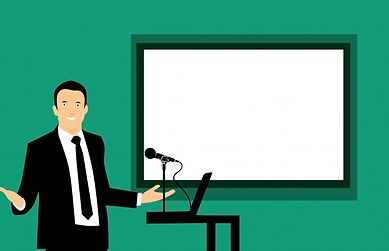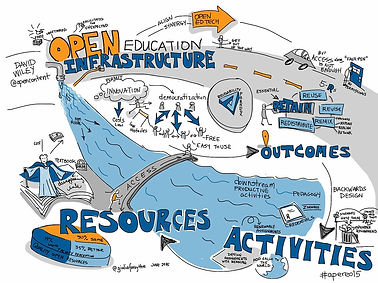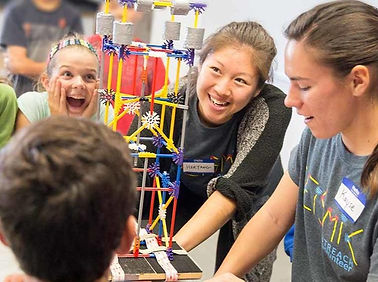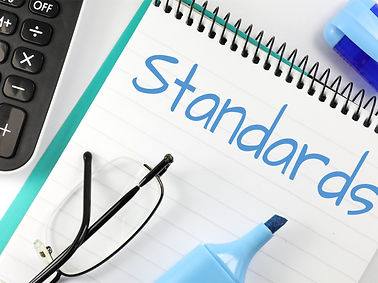
Instructional Design Document (IDD)
"The Instructional Design Document provides a framework that guides all key individuals involved in the eLearning development process. Additionally, it also specifies the overall course structure and detailed outline for individual modules. In short, it provides a set of rules and guidelines that Instructional Designers and course developers must adhere to as they build the course."
Executive Summary

Learning gap and learner profile
The need for the course "How to correctly complete the new electronic register" arose from direct observation of pages of the the new electronic register recently adopted by the school, often incomplete or incorrect.
Correctly complete the electronic register is a fundamental step to allow a harmonious didactic action by the school teachers, and to allow the school director to monitor the action of the individual teachers. Studio Italia's teachers are therefore the learners of the course.
Terminal learning objectives and course learning objectives
The aim of the course is to transmit to the teachers of the Studio Italia language school the skills and knowledge for a completely correct use of the new electronic register.
At the end of the course, teachers will be able both to correctly identify, record and describe lesson plans, and to analyze the lesson plans of other teacher colleagues, with the aim of planning appropriate lessons in case of replacement of a colleague.
Instructional and assessment strategies and course sequencing
The course will be delivered online in asynchronous mode and will be divided into 3 modules, plus an introductory module and a final summative assessment. The modules aim to transmit information and knowledge on the essential elements that need to be included in the new electronic register. These modules will use different ways of transmitting information, such as videos, infographics and PDFs, and will evaluate the acquisition of this knowledge through online tests. The final assessment will evaluate the effective ability of teachers to design valid lessons starting from the information contained in the register pages.
Learning model and theory
This working method is based on educational theories such as Constructivism and Andragogy. In fact, the basic principle is cooperation, interaction and the transfer of information and skills between adult students, with the aim of acquiring useful skills to face real difficulties in their daily working life. The learning model adopted is that of Backward Design, which sees the desired result as the starting point for reflection.
Type of course

The course "How to correctly fill in the electronic register" aims to provide to all teachers of Studio Italia school the means to properly fill in all the sections of the new electronic register recently implemented by the school. It also aims to provide teachers with answers to their most common doubts and difficulties.
The course is of the how-to type, and therefore aims to provide technical and practical information, useful in the daily life and teaching of teachers active at Studio Italia.
Learner Profile
The course is intended for the Italian teachers of Studio Italia, a private Italian language school that has been active in Budapest for more than 30 years.
The team of colleagues (between 10 and 12 members) has different levels of experience, from experienced teachers, with more than 20 years of work at Studio Italia, to newly hired teachers. Teachers are equally distributed between Italian native speakers and Hungarian native speakers (with a high proficiency in Italian). This course would therefore be delivered using Italian as main language, but for the purposes of our experimentation it will be created using English instead.
It is important to note that the Italian school in question is a very particular school, as it bases all of its teaching on its own teaching method, of a communicative and constructivist type. This method, developed in collaboration with the DILIT school in Rome, is based on principles such as peer collaboration, the use of authentic materials, the development of linguistic skills in concrete and real situations, the student’s autonomy, the individual discovery of the building blocks of the language.
This method has developed a series of didactic activities, codified and rigidly structured in sequential steps. All the teachers who teach at Studio Italia have received an initial training course to learn how to use these activities in the correct way and with the correct structure. We therefore assume that all teachers in the school have a solid knowledge of the teaching method in use and that they know how to apply it to the context of their classroom.
Teachers are willing to participate in the project and learn new skills and competences, but the time they have available is short and limited. The course must therefore be precise and concise.
Learning Gap

New governmental dispositions in Hungary and the arrival of the Covid-19 pandemic two years ago have raised the need to implement a new electronic register, and to do so in a way that can respond to the particular educational needs of Studio Italia.
The electronic register was therefore developed and successfully implemented on the school's servers, accessible online by all teachers from any device, and has been in operation for more than a year so far. Within the electronic register, a series of categories and sub-categories allow the selection and indication of the type of activities carried out and the didactic function of each individual activity.
The new electronic register responds to two orders of need: (1) the director and the head of teaching can supervise the proper conduct of teaching, based on the teaching principles that characterize the school, and (2) in the event of a sudden replacement of a teacher (for example in case of illness) the substitute can easily have a very precise idea of the activities previously carried out, and prepare his lesson properly.
However, although the school method is a method that proposes a series of structured activities, inevitably during the course of the language lessons the teachers propose activities and exercises of different types. This has created a lot of confusion among the teachers, who cannot fill in the register correctly in all its parts.
Terminal Learning Objective

At the end of the course the learners will be able to complete correctly and in all its parts the new electronic register recently implemented by the school, and they will be able to use it constructively in their didactic planning (especially in case of emergency, e.g. in case of replacement of a colleague).
Course Learning Objectives

The Course Learning Objectives are:
-
Identify the typology of the activities brought to the classroom based on a comprehensive list of possible activities, and identify the target language element focused in each activity.
-
Record essential items in the register, such as: the materials from which the activities come and the assigned homework.
-
Describe the learning phase to which each single activity corresponds (presentation, practice, guided production, free production. cyclical review).
Instructional Strategies

To achieve the previously mentioned learning outcomes listed above, the participant need to complete different types of learning activities and tasks.
In order to reach the learning outcomes educational videos will be used, elaborated with suitable softwares. They will include screencasts and original videos and podcasts. Assuming a sufficient familiarity between learners and the terminology adopted (type of teaching activities, different linguistic elements, teaching materials, language learning phases), the video-tutorial tool is supposed to achieve an acceptable level of the expected result.
To this will be added one or more explanatory handouts in PdF, as well as infographics for a written transmission of the contents.
Moreover students will have at their disposal online tools for sharing their thoughts and ideas and for cooperative work: forums and wikis.
Their knowledges will be assessed with quizzes and tests, implemented inside the LMS, ideally with Storyline 360 or with similar softwares.
Assessment Strategies

There will be different types of assessment strategies.
During the course, in particular during the work that aims to achieve the Learning Objectives through the use of videos, infographics and PdF, Formative Assessments will be proposed to learners. These assessments will take the form of multiple-choice quizzes and will have the aim of testing the knowledge acquired by the learners, giving them very useful feedback on their state of knowledge.
At the end of the course there will be a Summative Assessment, Performance-Based.
To the learners will be given the structure of a a 4-hours lesson, complete in all its elements (with the indication of the lesson plan, the activities proposed and in which sequence, and the materials used). The learners will also have to correctly complete the page of the electronic register, related to the given lesson plan.
Course Sequencing

The course is structured by an initial introductory module followed by 6 main modules (if necessary divided into sub-modules), each of which aims at the acquisition of a different Learning Objective. The modules are supposed to be elaborated in a strict order. The introductory module aims to illustrate to learners how to access the electronic register and its practical usefulness for school purposes, as well as to make them aware of the legal need to complete it. At the end of the course there will be the final evaluation phase of the skills acquired.
-
Module 0 - Introduction
-
Module 1 - Identification of the fundamental characteristics of the teaching activities
-
Sub-module 1 - Identification of the typology of the activities
-
Sub-module 2 - Identification of target linguistic elements
-
-
Module 2 - What information to include in the electronic register?
-
Sub-module 1 - Materials
-
Sub-module 2 - Homework
-
Sub-module 3 - Attendance
-
-
Module 3 - The phases of language learning
-
Final Summative Assessment, performance-based.
On the part of the learners it is necessary to have the basic pre-skill (which it is assumed already acquired) of the knowledge of the teaching method in use by the school, as well as the specific terminology adopted.
The order of the modules is strict and progressive, it allows to acquire knowledges and practical skills, as specified in detail in the Instructional Strategies and in the Assessment Strategies .
Learning Model

The learning model used in the design of this course is the Understanding by Design (UbD) frameworks, or Backward Design.
This working model consists of 3 main steps:
-
Identify desired results
-
Determine acceptable evidences
-
Plan learning experiences
UbD is a backward curriculum design model, and allows you to always keep in mind, from the first moment of work, the course's learning goals first. The UbD framework focuses the teaching on the development “of the student understanding and transfer of learning (i.e., the ability to effectively use content knowledge and skill)”. Actively using the skills and knowledge developed during the course is in fact the ultimate goal of this course, and UbD framework allows students and teachers/facilitators to always work with this clear goal in mind.
Once the results to be obtained have been identified, in the sense of the final course goal and in the sense of the learning objectives that are the measurable aspects of the course goal (step 1), the assessments are established, in order to evaluate the effective achievement of the various learning objectives (terminal and enabling) with the help of Bloom's Taxonomy (step 2). In step 3 individual and collaborative learning experiences are planned. Finally, it is important to implement an evaluation and reflection phase of the course, in order to "measure how effectively the individual learning experiences aligned with the overall goals".
Learning Theory

Constructivism and Andragogy are the two learning theories, closely related to each other, at the basis of this course.
Constructivism postulates that learners (whether they are adults or children) do not acquire new knowledge simply by receiving it directly through a process of direct transmission of knowledge, but rather they need to actively practice, through direct experiences.
An active engagement with the content is therefore necessary. Knowledge is created by combining prior knowledge with new experiences gained, not simply absorbed by an expert person. This is highlighted in the fact that the activities proposed in this course are activities that require the active commitment of the learners, as well as their collaboration and their exchange of hypotheses and information. The educator therefore is qualified not as a direct source of knowledge, but as a facilitator who makes direct collaboration and comparison between learners possible and active.
Central is the concept of "authentic learning tasks that replicate real-world learning situations to which learners must apply critical application from their knowledge base to resolve the scenario". This is evident from the type of tasks and assessments proposed, which on the one hand ask for the collaboration and exchange of information between the learners, and on the other hand reproduce the real needs that the learners will meet in applying the acquired knowledge in the future.
Given the starting conditions of the learners (they are all adult teachers of a language school) it is possible to recognize the assumptions and principles of Andragogy. In fact, the learners involved are all adult learners. The goal of their learning is extremely concrete and has a practical and immediate impact on their working life (we can assume that their intrinsic motivation to study is therefore very high). Learners have a high degree of autonomy in managing learning times (the course is administered in an asynchronous mode, but at the same time the request for collaboration between learners is high). Learners will be involved in the final evaluation process of the course. The course itself focuses mainly on solving a real problem, rather than simply pass knowledge.

Course Standards
The course "How to correctly complete the new electronic register" is a course to be carried out entirely online in asynchronous mode. You can take the course at any time and from any device with an internet connection. However, it is evident that the interaction between learners, which takes place through the use of forums, is a fundamental part of the course, as well as a component of the global evaluation.
We also remind you to read all the instructions carefully before carrying out the individual activities provided.
In completing this course all students commit to:
-
Complete the course on time and in all its sections.
-
Communicate effectively with classmates and participate actively and constructively in discussion activities.
-
Work individually during the final assessment, without the help of other people.
